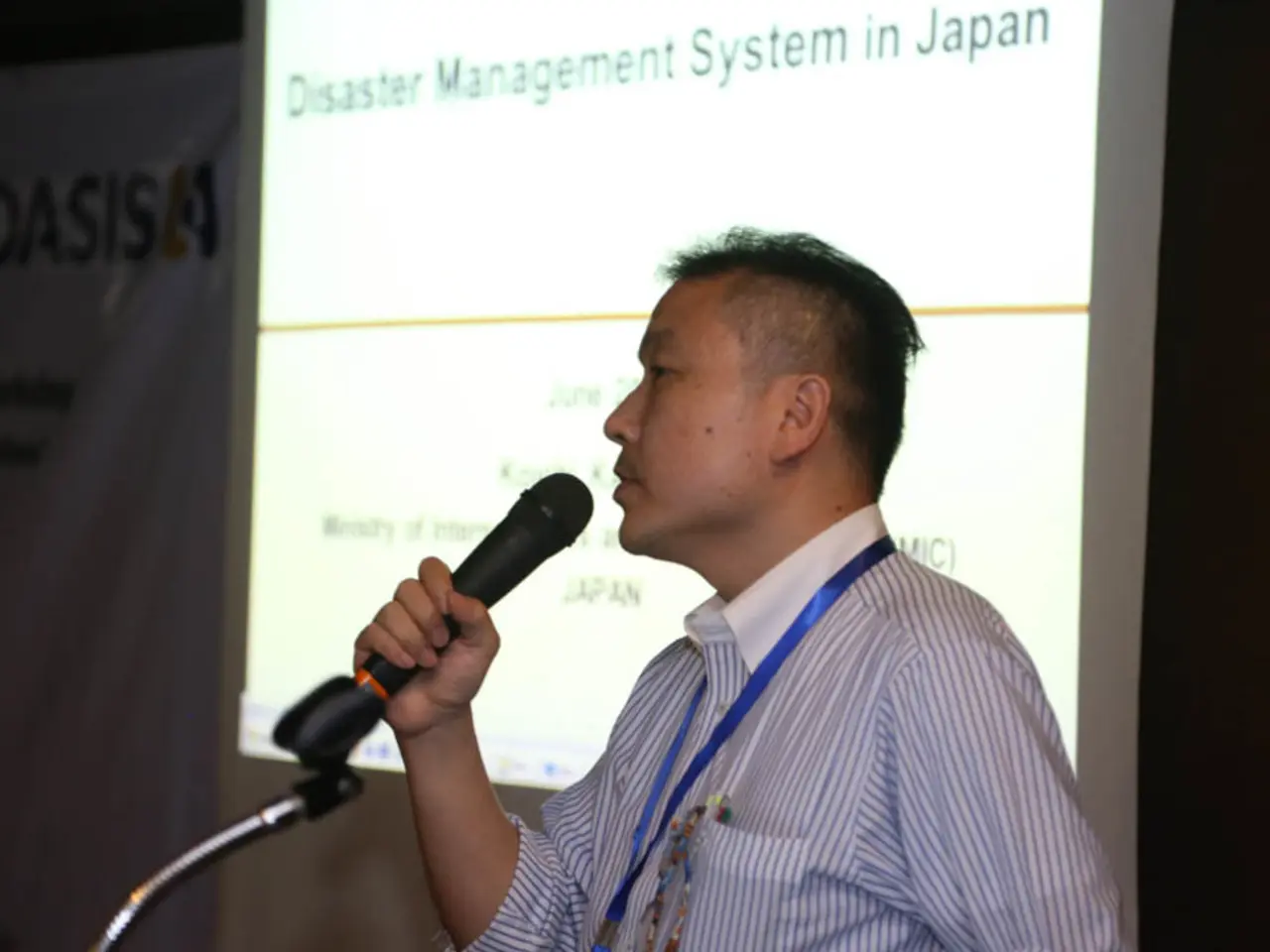Reminder of Hiroshima: Video Worthy of Recollection
=====================================================================
In a poignant act of remembrance, two artists, Ed Devlin and Machiko Weston, have created a digital art piece titled "I Saw the World End." The monumental digital work was commissioned by the Imperial War Museum in London and was displayed in the city, most notably on Europe's largest LED screen at Piccadilly Circus.
The art piece commemorates the 80th anniversary of the atomic bombing of Hiroshima on August 6, 1945, an event that claimed over 100,000 lives instantly. Unlike traditional depictions of destruction, "I Saw the World End" takes a unique approach, presenting a meditative, text-based visual experience.
The piece is a digital diptych, with each half of the screen representing a different perspective. Western creators and builders of the atomic bomb, curated by Devlin, are juxtaposed with Japanese victims, witnesses, and survivors, curated by Weston.
Rather than showing graphic imagery, the artwork uses flickering white text on a black background to guide the audience through a journey of memory, trauma, and political amnesia. It condenses the scale of destruction into a ten-second timeline, reflecting the brief period during which Hiroshima and Nagasaki were destroyed by nuclear bombs.
The film traces the 10 seconds it took to destroy Hiroshima on August 6 and Nagasaki three days later, depicting not only the immediate physical impact but also the agonizing and delayed deaths of thousands more due to radiation. It explores the physical impact of the bomb from a millionth of a second to 10 seconds, when the physical destruction was complete.
"I Saw the World End" also follows the timeline of the mythological impact, from the perspectives of grandparents, parents, and the cultural traditions of both Britain and Japan. It serves as a powerful act of remembrance and contemplation, challenging viewers to reflect on humanity’s capacity for destruction and the fragile boundaries of peace.
The piece is a poignant meditation on memory and the cultural legacy of nuclear war, provoking awareness of ongoing threats of nuclear extinction. It is a testament to the resilience of the human spirit and a reminder of the devastating consequences of war.
- The digital art piece "I Saw the World End" serves as a significant contribution to the education sector, providing a unique perspective on war-and-conflicts, specifically the atomic bombing of Hiroshima, contributing to general news and cultural travel.
- As a part of their lifestyle, art enthusiasts and history buffs may find the digital art piece "I Saw the World End" interesting, as it offers an insightful exploration of politics and cultural travel.
- With its display at Piccadilly Circus, "I Saw the World End" blends travel and lifestyle, allowing viewers to experience a poignant reminder of the devastating consequences of war, playing a crucial role in the instruction and preservation of historical events.





